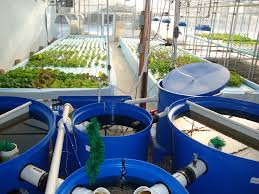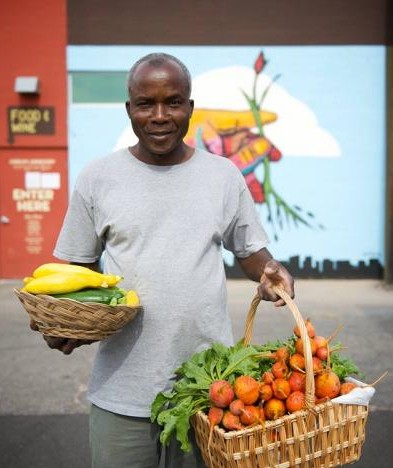IRC's New Roots Program to Build Aquaponics Center in Phoenix
 The International Rescue Committee helps refugees find a new start right here in Phoenix. IRC’s New Roots program gives refugee farmers the training and tools vital to grow produce and rebuild their lives, in addition to nutrition education and small business training. New Roots planted themselves in 22 U.S. cities, and work toward giving refugees opportunity to use their skills and create a prosperous life for themselves. New Roots plans to open an aquaponics greenhouse on 16th Ave and Camelback Rd in Phoenix, which is important for the community members who have little access to fresh produce.
The International Rescue Committee helps refugees find a new start right here in Phoenix. IRC’s New Roots program gives refugee farmers the training and tools vital to grow produce and rebuild their lives, in addition to nutrition education and small business training. New Roots planted themselves in 22 U.S. cities, and work toward giving refugees opportunity to use their skills and create a prosperous life for themselves. New Roots plans to open an aquaponics greenhouse on 16th Ave and Camelback Rd in Phoenix, which is important for the community members who have little access to fresh produce.
 Aquaponics is the combination of aquaculture and hydroponics. Within this symbiotic system the fish create waste, the waste is transformed into nutrients that are streamed to the plants, the plants filter the water and then circulate back to the fish. Aquaponics benefits the Phoenix area greatly, as it uses 90% less water than conventional growing methods. In addition to using less water, aquaponics also requires less land.
Aquaponics is the combination of aquaculture and hydroponics. Within this symbiotic system the fish create waste, the waste is transformed into nutrients that are streamed to the plants, the plants filter the water and then circulate back to the fish. Aquaponics benefits the Phoenix area greatly, as it uses 90% less water than conventional growing methods. In addition to using less water, aquaponics also requires less land.
Using less land is extremely important because access to land is increasingly hard to come by. With more  urbanized growth, there becomes less and less land to grow agriculture, especially for disadvantaged populations. New Roots currently has land at Phoenix Renews, but is approaching the end of a lease. The aquaponics greenhouse will empower refugees with limited access to land to grow their own food and create a livelihood.
urbanized growth, there becomes less and less land to grow agriculture, especially for disadvantaged populations. New Roots currently has land at Phoenix Renews, but is approaching the end of a lease. The aquaponics greenhouse will empower refugees with limited access to land to grow their own food and create a livelihood.
The agricultural center will give refugees the opportunity to grow food to not only feed their families but also sell at markets, such as Phoenix Public Market, as a source of income. The food grown is native to their homes, and helps reconnect them to their culture as well as  creating cross-cultural experiences. These experiences create connectedness within the community and help refugees create a sense of place in their new home. Much of the produce grown by refugees cannot normally be found in the Phoenix area, so the food produced also will generate biodiversity within the food system.
creating cross-cultural experiences. These experiences create connectedness within the community and help refugees create a sense of place in their new home. Much of the produce grown by refugees cannot normally be found in the Phoenix area, so the food produced also will generate biodiversity within the food system.
The center in Phoenix hopes to provide new jobs, education, and nutrient-dense locally grown food on less than one acre of land. The center will also offer education on growing food in urban areas.
